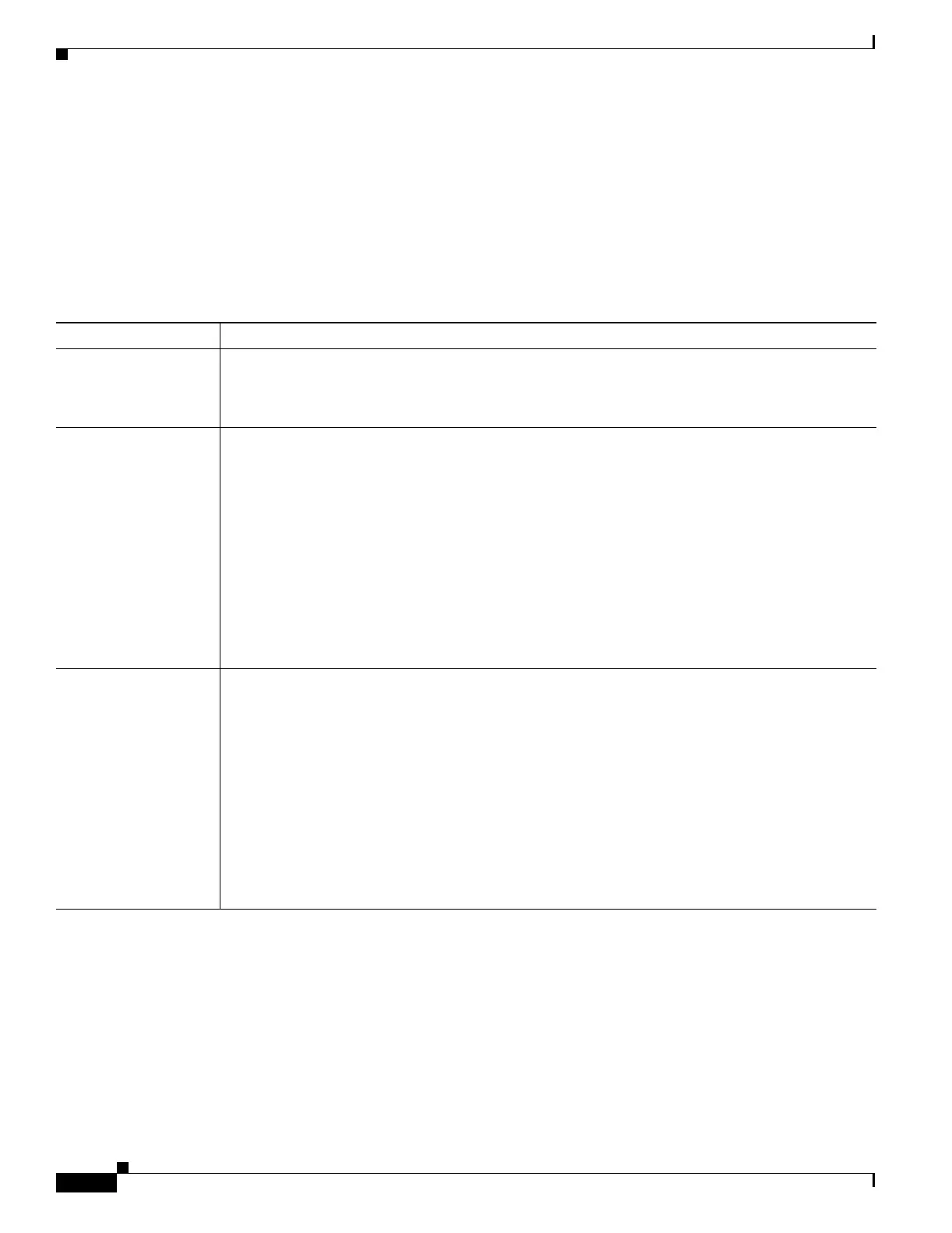31-18
Catalyst 2950 and Catalyst 2955 Switch Software Configuration Guide
78-11380-12
Chapter 31 Troubleshooting
Diagnosing LRE Connection Problems
Diagnosing LRE Connection Problems
Table 31-2 lists problems that you might encounter when configuring and monitoring the LRE ports on
the Catalyst 2950 LRE switches. For more information about LRE connections, see the “Environmental
Guidelines for LRE Links” section on page 12-9.
For switch upgrade and customer premises equipment (CPE) device upgrade troubleshooting
information, see the “Upgrading LRE Switch Firmware” section on page 12-24.
Table 31-2 LRE Port Problems
Problem Suspected Cause and Suggested Solution
Amber LRE port LED The switch and CPE device are unable to establish an LRE link using the selected profile.
• Change to a profile with a lower data rate (for example, use LRE-5 instead of LRE-15).
• Reduce the effect of stubs or bridge taps by terminating them with 300-ohm microfilters.
Excessive CRC errors
on an LRE link
• A noisy environment (such as motors and power surges) is causing interference with the LRE
link.
–
Change to a profile that has the interleave feature enabled, such as the LRE-5, LRE-10,
LRE-15, LRE-10-1, LRE-10-3, or LRE-10-5 profile.
–
Change the interleave block size value to a value other than 0.
–
Change to a profile with a lower data rate (for example, use LRE-5 instead of LRE-15) to
increase the noise margin.
• The LRE link length and quality are close to the limit of operation.
–
Change to a lower profile (for example, LRE-5 instead of LRE-15).
–
Reduce the effect of stubs or bridge taps by terminating them with 300-ohm microfilters.
High Reed-Solomon
error count without
CRC errors
• The interleave feature is helping Reed-Solomon error correction to function correctly in a noisy
environment. This situation means that the system is on the verge of generating CRC errors.
–
Change to a profile that has the interleaver feature enabled, such as the LRE-5, LRE-10,
LRE-15, LRE-10-1, LRE-10-3, or LRE-10-5 profile.
–
Change the interleave block size value to any value other than 0.
–
Change to a profile with a lower data rate (for example, use LRE-5 instead of LRE-15) to
increase the noise margin.
• The LRE link length and quality are close to the limit of operation.
–
Change to a profile with a lower data rate (for example, use LRE-5 instead of LRE-15).
–
Reduce the effect of stubs or bridge taps by terminating them with 300-ohm microfilters.

